There are calls for the government to spend hundreds of millions of dollars combating a fast spreading algae that looks to have a devastating impact in the waters of the Hauraki Gulf and beyond.
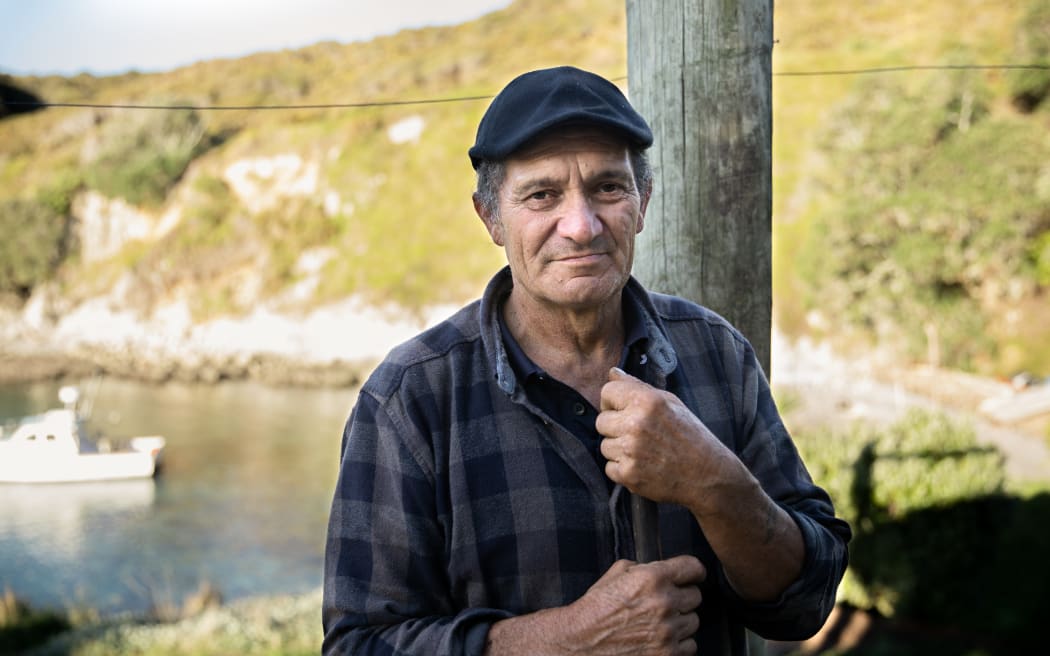
Opo Ngawaka is chair of the Ngāti Rehua Ngātiwai ki Aotea Trust. Photo: RNZ / Cole Eastham-Farrelly
Opo Ngawaka has lived on Aotea Great Barrier all his life, raising six children with his wife Elaine on the tiny island of Māhuki.
Living off the land and looking after nature are their way of life.
But that is under threat with the fast-spreading killer algae caulerpa.
"I've never seen anything like it," says Ngawaka, chair of the Ngāti Rehua Ngātiwai ki Aotea Trust.
The exotic seaweed which smothers anything in its way was recently found near Māhuki, off Aotea's west coast, a sign that it is spreading beyond the three harbours where it was first discovered two years ago, leading to a rāhui and ban on fishing with sinkers and anchoring.
This week, Aotea residents are meeting with representatives from Biosecurity NZ, an agency of the Ministry for Primary Industries, about how to combat caulerpa's spread. That includes discussion on an extension of the Contained Area Notices which enforce anchoring and fishing restrictions.
They're still hoping it can be eradicated but efforts so far have failed to stop new outbreaks and the thickening mats of the seaweed now cover up to 80 hectares in some areas.
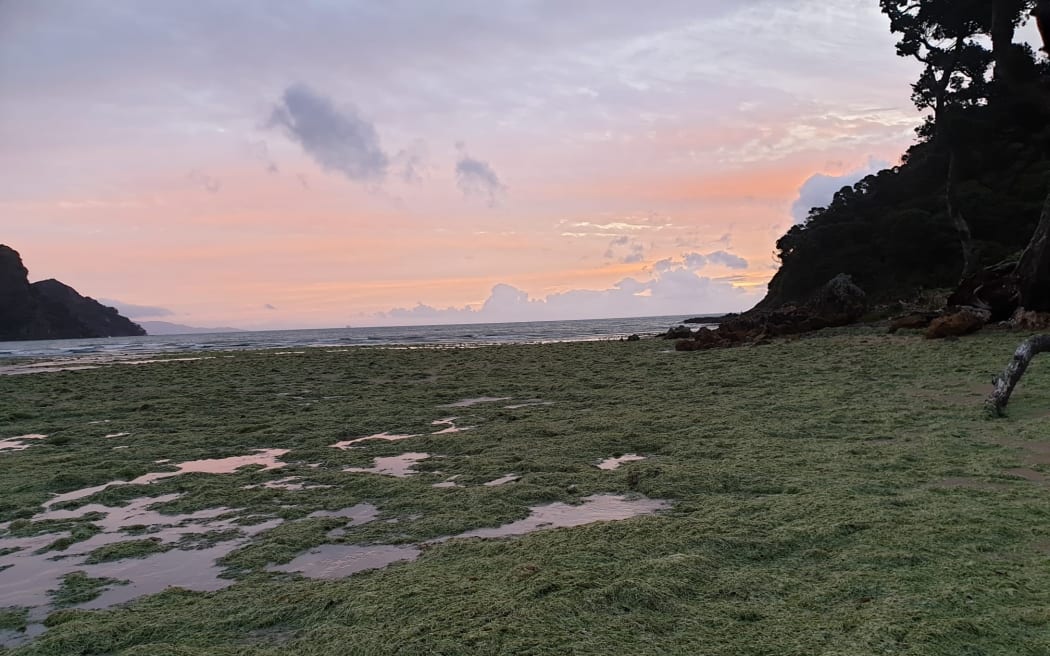
Okupu Bay, on Aotea Great Barrier, post-Cyclone Gabrielle, covered in caulerpa. Photo: Noel Nancekivell
Dr Barry Scott, a former science professor at Massey University and deputy chair of the Aotea Great Barrier Environmental Trust, says the lack of progress in tackling the pest is "staggering", not only on Aotea but in other areas at the top of the country including Northland, Hauraki Gulf, and Great Mercury Islands.
"It's sad, it's maddening, how Wellington has just not responded. There've been various iwi deputations to the former minister of biosecurity, they've banged on his table, they've written letters, there's all sorts of environmental groups around the Hauraki Gulf including ourselves who've written to the minister, and just nothing happens. A pitiful amount of money's been spent on it."
There have however been "endless meetings ... we're hui-ed out."
Scott has recorded a lengthy timeline of caulerpa since it was first discovered in Okupu at Aotea in June 2021, including media coverage and efforts by different groups and communities to persuade government ministers and MPI to act.
He says it illustrates the poor response.
"We've got an appalling record in New Zealand about how we treat the marine space, and this is just more of it."
Ngawaka says he feels for the residents living by the affected harbours who have been banned from anchoring their boats or from sinker fishing for more than two years.
But the entire Aotea community is "gravely concerned" about the impact, firstly on the marine environment, but also on local businesses that rely heavily on boaties who flock to the island in summer.
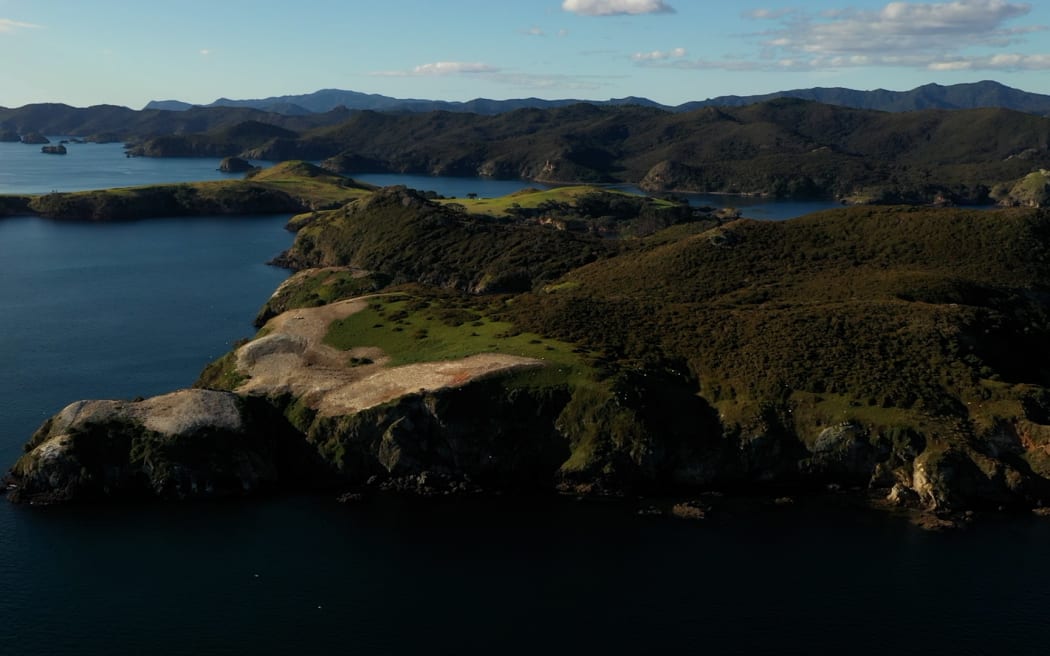
The majority of Aotea Great Barrier Island is managed as a nature reserve by the Department of Conservation. Photo: RNZ
Ngawaka tells The Detail that he and other iwi leaders from Aotea Great Barrier and Waiheke are calling on the government to put aside hundreds of millions of dollars to combat the marine invader as it continues its devastating march along the top of the country.
Ngawaka says they've sent a joint letter to the government asking it to budget $200 million next year to fight caulerpa.
He says a small amount of suction dredging in Tryphena Harbour at Aotea cost an "enormous amount of money" and he doesn't think $200 million will be enough with the algae now in waters at Northland, Great Mercury Island (Ahuahu), Kawau Island, and Waiheke Island in the Hauraki Gulf.
Ngawaka says the lack of response from the government about an increase in funding has been disappointing.
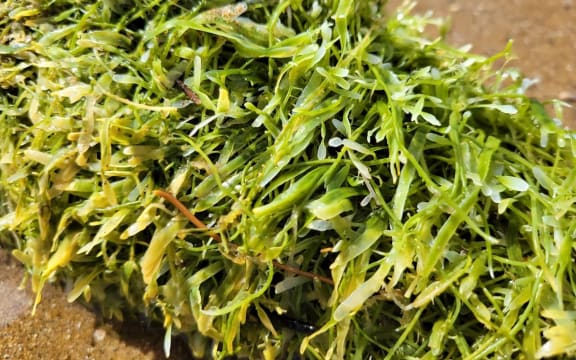
Also known as 'the killer alga' and 'the foot and mouth disease of the ocean', caulerpa is one of the most serious invasive seaweeds in the world, says Dr Barry Scott. Photo: Chris Sidney Wales
"What they don't understand is the danger of having this weed around. They may be able to do something about it now before it's too late but there is going to be a point where it is unstoppable."
Caulerpa have green fronds up to 10 centimetres long in the shape of oar blades that rise from long runners or roots known as stolons, according to MPI.
They can be found growing below the tideline at between two and 30 metres on hard surfaces and in sandy areas. When established, exotic caulerpa can cover large areas of the seafloor in dense mats. It's easily spread by currents, boat anchors, and even stingrays slicing through it.
Ngawaka says he would like to see a complete ban on boats to the island this summer, but that would hurt many businesses.
He also worries extending the ban further along coastline would put pressure on the fisheries of other parts of the island that are not infected. And he is concerned it would also mean that Port Fitzroy, the only all-weather place to anchor on the island, is out of bounds.
Experts have told MPI that the scale of the invasion is beyond any previous successful eradications in marine environments and there are no tools available to eradicate it.
"Nobody in the world has managed to eliminate this pest at this scale and depth in the open ocean," the deputy director-general of Biosecurity NZ Stuart Anderson says.
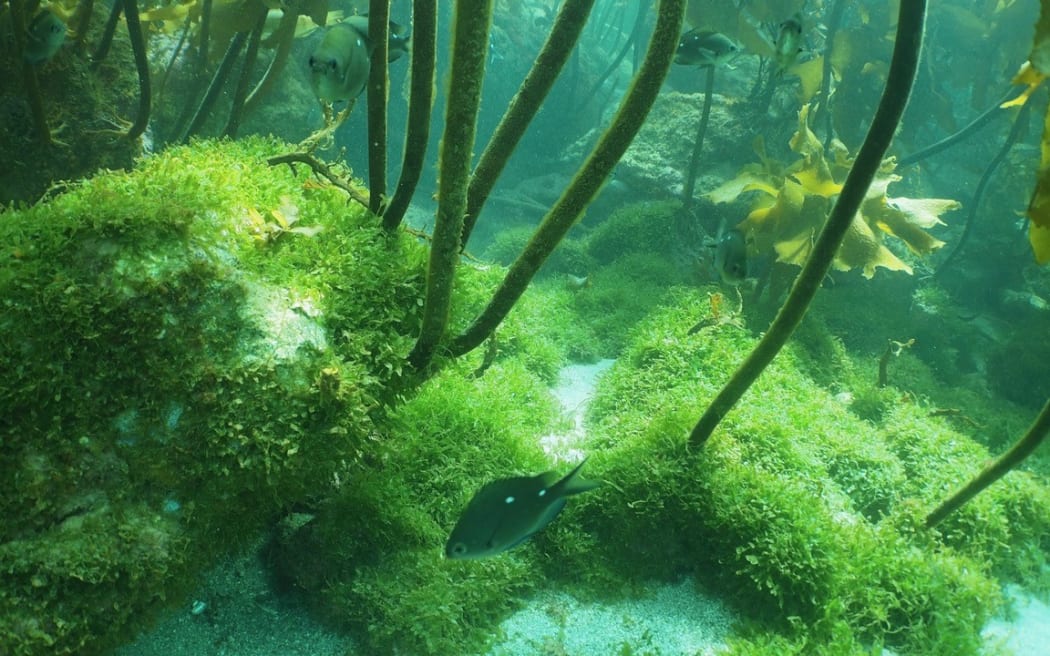
Prolific growth of caulerpa on the seabed of Schooner Bay, Aotea / Great Barrier Island. Photo: Glenn Edney
Local and international scientists say the best hope is suppression and containment. Despite this, Anderson says, Biosecurity NZ is still looking for ways to remove smaller outbreaks and control it.
Anderson says when it was first found at Aotea in 2021, it was thought it had been there for two to three years. There were already many hectares of caulerpa including extensive, dense mats at up to 38 metres deep.
He says $5 million has been "spent or allocated to fund a consistent and thorough effort to understand the pest and its behaviour and distribution in New Zealand, trial treatments and prevent its spread through legal controls and public education".
Work includes diver surveillance, seeking independent science advice, putting in Controlled Area Notices, public information campaigns, and on-water compliance using local vessels and MPI officers.
Salt treatment has been trialed at Whangaparapara and Tryphena Harbours, and suction dredge treatment at Tryphena Harbour. Another suction dredge will be trialed in Northland.
"Criticisms that the effort has been slow and inadequate do not account for the complexity of this issue. We are dealing with a highly invasive pest with no known effective management tools," Anderson says.
Check out how to listen to and follow The Detail here.
You can also stay up-to-date by liking us on Facebook or following us on Twitter.

Photo:


